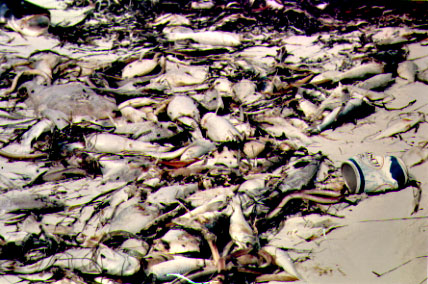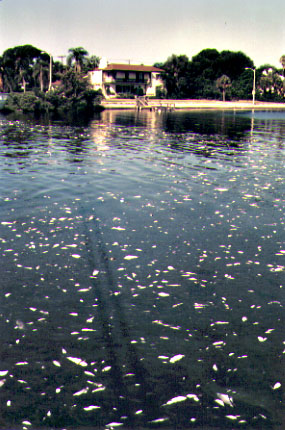
Whether toxic or noxious algal species dominate a bloom or alternatively, occur at low but harmful levels within a phytoplankton community, their presence often affects other trophic levels, resulting in mass ecosystem dysfunction, public health risk, and enormous econonmic losses. The devastaing effects of HABs are frequently seen on the west coast of Florida where the proliferation of the toxic dinoflagellate Gymnodinium breve can result in massive fish kills, closure of shellfish beds due to NSP and skin and respiratory irritation to humans at the seashore. These blooms are responsible for the loss of millions of dollars to the commercial and recreational fisheries and tourist industries.

Pictured here are fish killed by red tide blooms, washed ashore either to accumulate on beaches or in small quiet coves near residential homes. These fish pose a health hazard as they rot and decay, and birds such as pelican, seagulls, comorants, and possibly marine mammals can become intoxicated by eating dead or dying fish. Photos Courtesy of the Florida Department of Environmental Protection.
